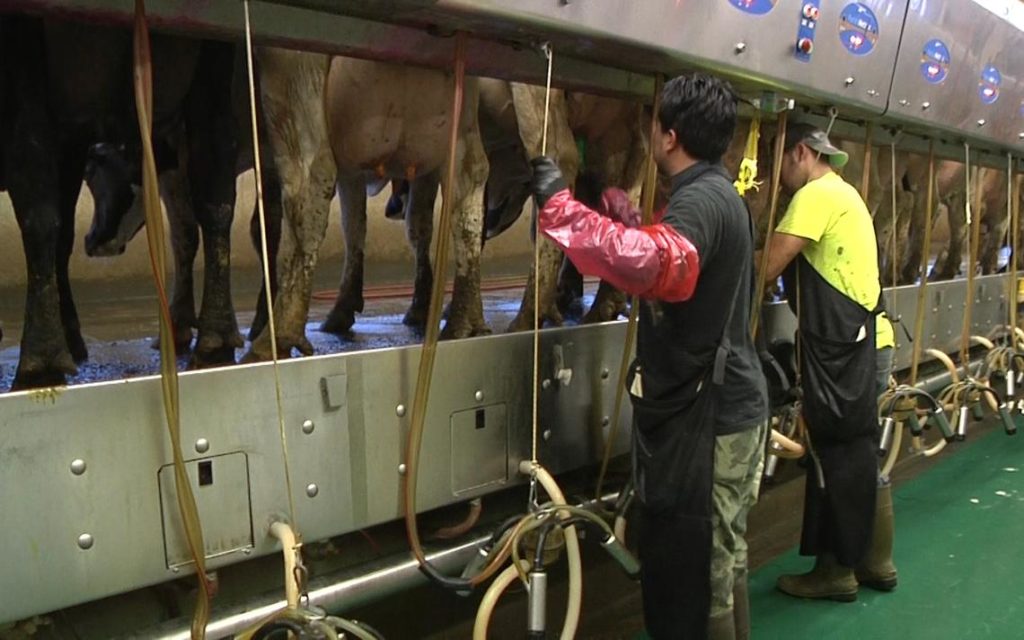South Dakota’s dairy industry put itself on the map, continually leading the nation in milk production growth. And there is no indication of that stopping any time soon.
“South Dakota has grown 35% in milk production the last three years; that gets noticed on a national stage,” said Jason Mischel, with Valley Queen Cheese Factory in Milbank, S.D.
Dairy producer Lynn Boadwine owns and operates Boadwine Farms near Baltic, and said the growth has been remarkable.
“You’ve got South Dakota now, who wasn’t even in the top 20 dairy states in the country, and now we’ve become one of the hottest spots,” he said.
Boadwine said he watched the state’s dairy industry in the late 1990s as cow numbers were quickly dwindling. At that time, he and other dairy producers determined if they could not increase the milk supply, they were in jeopardy of losing their existing processors and would end up having nowhere to sell their milk.
Boadwine said the industry worked hard to increase cow numbers and attract new dairies; at the same time, they also worked to attract new processors. They were successful in attracting Bel Brands to Brookings, and Agropur to Lake Norden. They’ve also seen the growth of several existing manufacturers including Valley Queen.
However, growing the dairy industry is a continual chicken and egg scenario between producers and processors. Mischel said right now he thinks the state and Interstate 29 corridor is in need of more processing.
“We are at a point where the plants are pretty full in this region, and if they’re not full today, they’ve committed to some new construction of dairies. So, yeah, I think processing needs to grow,” he said.
South Dakota Dairy Producers Association President Marv Post agrees.
“Well, right now our processing has been filled with the cows and the production that we have both from increased production on a per cow basis and the number of cows coming in. So, right now, processing is full,” he said.
The industry recognized this trend and has been working the last couple of years to attract a new processor.
The I-29 corridor is an ideal spot for dairy development.
“Every time that we expand processing, we expand the production of the product, the milk. Plus, with our ability to grow corn, grow alfalfa and all the raw ingredients needed to feed that dairy cow, it just makes it a very efficient place to do that,” Post said.
Boadwine said the state is a good place to do business for both producers and processors. The regulations are less onerous than in states like California. It is less sparsely populated, which makes it more suited to animal agriculture, and geographically it has advantages.
“We are located in the middle of the country. You know, product that a processor makes can go either direction,” he said.
The balance is making sure there is enough milk to supply processors. Boadwine said you can’t be short of milk, because it drives up milk prices on the farm.
“You don’t want to have the highest price raw material for those folks so they’re not going to move here. So, we’ve got to be right priced to attract a processor,” he said.
Talk continues in the dairy industry about a new dairy processor soon to be announced in South Dakota. Mischel said that wouldn’t surprise him, but for processors, building any plant is a huge investment. He said a new plant that went online in Michigan cost around $450 million to $500 million, and even the expansion at the Valley Queen cheese plant in Milbank was a big commitment.
“We just finished a small project that was still $50 million. The next project we’re looking at is probably $100 million,” he said.
He said when processors make an investment, they look at dairy producers to make a big investment as well.
“So, is it one or the other right now?” Mischel said. “No, it’s probably both because if there’s going to be more processing there has to be more milk with it right away.”
He said it is also likely there will be additional growth within the current manufacturers in the I-29 corridor.
“The good thing is we have very strong processors in this region that I think are committed to growth, and I think you’ll hear of some projects that are at least being contemplated,” Mischel said.
Post said if there is a new plant built in the state or expansion of current infrastructure, dairy producers have a proven history of stepping up to meet the production challenge. The industry has recruited many dairies to the state from other parts of the U.S. and internationally, but they always welcome expansion of existing herds.
“Of course, we’re excited whenever somebody that is already established in the state and they decide to expand their permit or grow their operation and that’s been happening on a regular basis,” he said.
South Dakota dairy producers are proud of the increase in cow numbers and production they’ve seen in the past decade plus. Post said he gets calls from producers in other states that want to know what South Dakota is doing different. He said it’s no secret.
“South Dakota and the I-29 corridor is an excellent place to do dairy,” he said.











